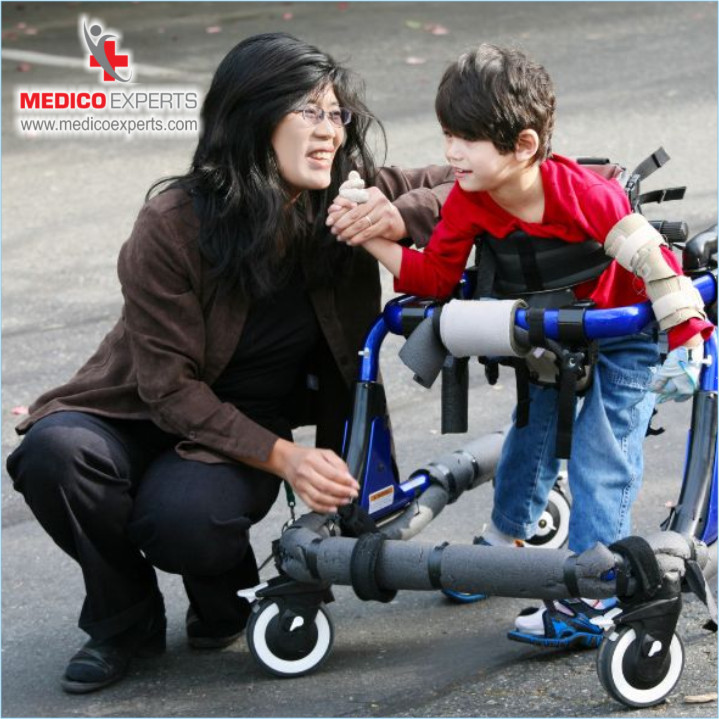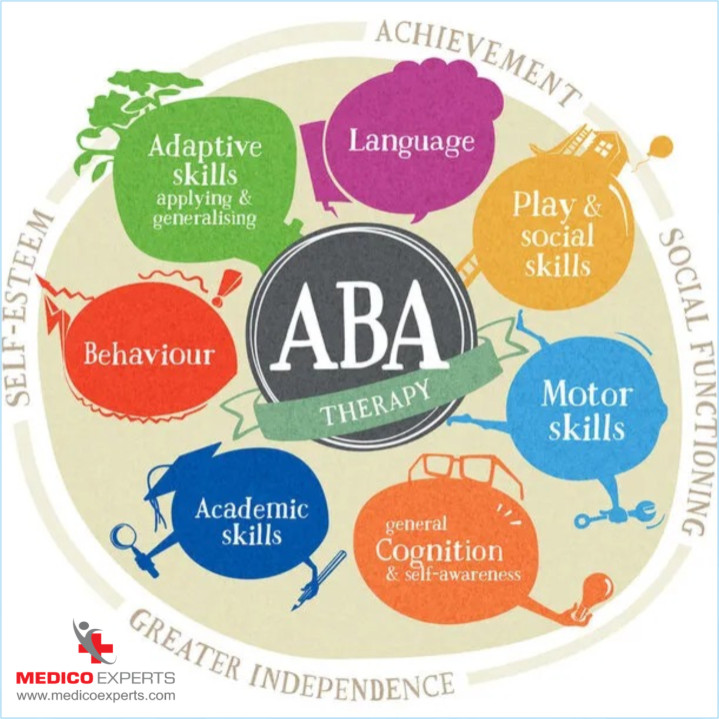How Behavioral Therapy for Autism Helps: A Complete Guide
As a parent of an autistic child, you may be trying to understand the complexities of raising a child on the autism spectrum. You definitely have read blogs and heard a lot about them. You may also have joined support groups.
But despite all your efforts, you have constantly been thinking about ways to help your child grow and live independently.
If that’s your concern, behavioral therapy for autism can be the solution you are looking for. Behavioral therapy is an evidence-based therapy that is designed to increase your child’s social, communication, and behavioral skills.
Parents who want to see their child achieve milestones should try this therapy for much better outcomes. We have created this guide to help you understand this therapy, its techniques, and the tangible benefits it offers.
So, have a look at everything you should know about this therapy.


What is Behavioral Therapy for Autism?
Behavioral therapy is the basis of autism treatment. It focuses on understanding and modifying behaviors by analyzing what happens before and after a behavior. Healthcare professionals and educators prefer this approach, as it is evidence-backed. That’s why it is used in most schools and treatment clinics.
Applied Behavior Analysis (ABA) is among the most effective autism therapies. It has been proven as one of the most effective methods for encouraging desired behaviors and reducing undesired ones.
Other than ABA, there are other types of behavioral therapies. Let’s understand how each of them works.
Behavioral therapy follows these key principles aims to help in skill-building and behavior management:
- It follows the principle of reinforcement. Positive behaviors are rewarded to encourage their recurrence, while negative behaviors are ignored or discouraged.
- It’s another aim is Skill Building. Behavioral therapy teaches communication, social, and adaptive skills. It does so by breaking complex tasks into manageable steps.
- Another principle of this therapy is to provide personal care to the child. The therapy plans are created keeping in mind the person’s unique strengths, challenges, and goals to make it more effective.
What are the Different Types of Behavioral Therapy for Autism?
Behavioral therapy has different types. Let’s learn about them in detail:
Applied Behavior Analysis (ABA)
Applied Behavior Analysis (ABA) is a scientifically backed therapy that focuses on understanding and improving behavior. It’s rooted in the science of learning and behavior and aims to help identify how behavior works, how the environment influences it, and how learning occurs.
ABA encourages helpful behaviors in children and reduces harmful ones that hamper learning. This therapy is used for autism spectrum disorder (ASD) and other developmental conditions. ABA can help improve language, communication, social skills, and academic abilities. It also minimizes problem behaviors.
ABA therapy can be personalized according to the patient’s needs and environment. It can be used at home, school, or in the community. Positive reinforcement is the focal point of ABA. It is achieved by rewarding desired behaviors to encourage repetition. You can do this by praising them or participating in their favourite activity as a reward when your child completes a task.
Another essential component is analyzing what happens before a behavior and what follows a behavior. This is called the “A-B-C” framework and it helps therapists understand and modify behaviors effectively.
Most Important Aspects of ABA Therapy
Here are the important aspects of ABA therapy that make it one of the most preferred approaches by caregivers, and healthcare providers.
- It follows a personalized Plan. A board-certified behavior analyst (BCBA) designs a program as per the learner’s needs. The program focuses on communication, self-care, and social skills.
- It tracks the progress. Therapists collect data during sessions. They assess and adjust treatment goals accordingly.
- The best part is that as a parent or caregiver, you will receive training to support your child’s skill practice in daily life.
ABA is an evidence-based approach endorsed by organizations like the American Psychological Association. Studies show that intensive ABA therapy improves intellectual, social, and daily living skills, particularly in children with ASD.
If considering ABA, consult a pediatrician or an ABA provider to determine the best fit for your child.
Positive Behavioral Interventions and Supports (PBIS)
PBIS is an evidence-based framework. It focuses on reducing challenging behaviors in children by teaching and reinforcing positive behaviors. It also focuses on teaching and encouraging good behaviors instead of reacting to problems.
Following are the strategies PBIS uses:
- The first strategy is to Set clear expectations. For example, having rules like “Walk quietly in the hallway.”
- Positive reinforcement is another important strategy. Rewarding good behaviors, like praising them for their behavior.
- The next strategy is to make a routine for the child. Consistent schedules help students know what to expect and feel secure.
- Teaching alternatives is another important strategy. The educators can show students better ways to act, like raising their hands instead of shouting.
- Adjusting environments as per the student’s condition. PBIS focuses on reducing distractions or creating calming spaces in school and at home to help students focus and behave well.
PBIS focuses on preventing behavioral problems in children instead of punishing them. It works by teaching and rewarding good behaviors while discouraging bad ones. This approach is called a “positive behavioral support plan” (PBSP).
PBIS uses a three-tier system:
Tier 1: Support for all students to encourage good behavior.
Tier 2: Extra help for students who need it.
Tier 3: Special, people support for students with serious behavior challenges.
Early Intensive Behavioral Intervention (EIBI)
EIBI is a therapy that is designed for young children with autism. Its goal is to help children develop essential skills during their early years.
EIBI follows the principles of Applied Behavior Analysis (ABA) to teach communication, social interaction, and self-care skills. But your child gets the most out of it when they start this therapy at an early age. Mostly because, in their early years, children’s brains are adaptable to new teaching and changes.
EIBI involves highly structured and personalized therapy plans for each child’s needs. The process includes these steps:
Step 1: Therapists evaluate the child’s current abilities, strengths, and areas needing improvement. This process is important to create a personalized treatment plan.
Step 2: Children receive intensive, one-on-one therapy for several hours weekly. These sessions focus on breaking down complex skills into small, manageable steps.
Step 3: At this stage, children are taught different skills like communication skills, social skills, and daily living skills.
- Communication Skills: the special educator teaches children to express their needs using words, gestures, or assistive tools.
- Social Skills: The educator helps them engage with others, share, and play cooperatively.
- Daily Living Skills: The educator helps them learn to build independence in everyday tasks like eating, dressing, and toileting.
Step 4:Therapists use rewards to encourage desired behaviors in children. This makes learning enjoyable and motivating for them.
Step 5: Parents are trained to continue the therapy techniques at home without any help. This is to ensure consistency and faster progress in the children.
Step 6: The educators and specialists will review your child’s progress regularly. They will then adjust the plan to meet the child’s evolving needs.
EIBI is highly effective in young children with autism. It is important to reach out to a specialist as soon as possible because early intervention takes advantage of the brain’s plasticity and adaptability of the child. This boosts quicker and more skills acquisition. Studies have indicated that children who undergo EIBI show improvements in communication, social interactions, and adaptive behaviors, which highly increase their ability to succeed in school and daily life. By starting therapy early, children are better equipped to face the challenges of development and integrate into society more effectively.
Parent-Mediated Interventions
Parent-mediated interventions are ways to help your child grow and learn and you will be doing everything to boost their development. So there will be no reliance on therapists to work with your child. These interventions teach you simple strategies you can use every day during regular activities like playtime, meals, or even while getting ready for bed.
The idea is that as a parent, you’re already the most important person in your child’s life and nobody knows your child better than you. The child feels most comfortable with you. By learning and using specific techniques, you can support their communication, social, and emotional skills naturally every day.
These methods are especially helpful for children with autism and work best when started early. Moreover, it helps you build an even stronger bond with your child while guiding them to reach their full potential.
Here’s how these interventions work:
- You get to know your child. For that, you will meet a therapist or specialist who will help you understand your child’s needs, strengths, and challenges. You will work together and set goals for what needs to be done. It can be improving eye contact, communication, or any negative behavior.
- There will be coaching sessions for you where you will learn particular strategies. These strategies are fun ways to encourage your child to talk, play, and stay focused. You will be given step-by-step training for that.
- Next, you will practice these strategies at home while performing daily activities. You need to naturally weave in the techniques you have learned while playing with toys, eating lunch, or reading a bedtime story.
- You are not doing all these alone. The therapist or the specialist will check the progress of your child regularly. They will answer your questions and also tweak the strategies for better results.
- Over time, you will see some meaningful progress in your child.
Cognitive-Behavioral Therapy (CBT)
Cognitive Behavioral Therapy (CBT) is a type of talk therapy that helps people change how they think and respond to challenges in life. Simply put, it’s about understanding how our thoughts, feelings, and behaviors are connected. You or your child can learn to spot negative thought patterns and replace them with more positive and constructive ones. A therapist will help you in doing so.
CBT isn’t just for people dealing with mental health conditions like depression, anxiety, or PTSD. It’s also a great tool for anyone wanting to manage stress or handle tough situations better. What’s even better? It’s usually done in a set number of sessions, so you’ll see progress without a long-term commitment.
Here’s how CBT works:
- The therapist helps you or your child identify thoughts or behaviors that might be causing problems during the session. For instance, your child might feel they’re “not good enough” in school, which affects their confidence levels.
- The therapist works with you to question them once these patterns are identified. They do so by asking questions like “Is that thought really true?” or “Could there be a different way to look at the situation?”
- After replacing negative thoughts with positive ones, you or your child practice these new ways of thinking and responding in daily life. Over time, these changes lead to better coping skills and healthier habits.
How Behavioral Therapy Benefits Individuals with Autism?
Behavioral therapy can make a real difference in the life of your child with autism. It’s all about teaching skills and creating positive changes that boost their development and day-to-day life. Here are some benefits of behavioral therapy for autism:
One of the biggest therapy goals for autism is helping children express themselves. Behavioral therapy focuses on building these skills. Over time, your child can connect better with others, share their emotions, and confidently join activities with friends.
Tantrums, aggression, or other negative behaviors can be tough to handle for you as a parent. Behavioral therapy works by figuring out the reasons behind these behaviors and replacing them with better ways to respond. This makes daily life smoother, safer, and more enjoyable for your child and your family.
Behavioral therapy equips children with practical skills like getting dressed to toilet use. This therapy helps them learn to handle tasks on their own. This means they’ll rely less on you or other caregivers. This new change will give them a sense of accomplishment and you some peace of mind.
Every child is unique, and behavioral therapy tailors its approach to fit your child’s strengths and challenges. This helps your child achieve improved communication, fewer disruptive behaviors, and more self-reliance.
Ultimately, behavioral therapy isn’t just about skills. It’s about helping your child thrive and giving your family the support you need for a brighter future.
What to Expect During Behavioral Therapy?
Behavioral therapy focuses on solving behavioral problems and promoting positive change through properly structured activities. Here’s what you should expect from this therapy:
Initial Assessment and Goal Setting
This therapy begins by assessing where the therapist gathers information about the individual’s strengths, challenges, and triggers. Therapists will observe the child’s behavior and review the developmental milestones. They will also interview caregivers.
The therapist will then set goals like improving communication skills or reducing repetitive behaviors based on this assessment. It will ensure that your child’s progress is trackable.


Session Structure
Therapy sessions follow a consistent format. Each session may include a warm-up, skill-building activities, and a review of progress. For example, a therapist might use role-playing to teach social skills or positive reinforcement to initiate desired behaviors in your child.
Caregivers are involved to make sure that they practice these strategies at home. These sessions are personalized keeping in mind the child’s age, abilities, and immediate needs.
Monitoring Progress
Monitoring the progress of your child is essential for effective therapy. The therapist will regularly evaluate whether the strategies are working by observing behavior changes and collecting data. For instance, they may record the frequency of specific behaviors over time. If progress stops, they will adjust the interventions to meet the child’s evolving needs.

How to choose the right Behavioral Therapy for Autism?
Selecting the right therapy for your child can be a stressful process. But you can make it a smooth one by using a thoughtful approach. Here’s a checklist to guide you:
1. Therapist Qualifications and Certifications
You should always verify the therapist’s qualifications. You should check whether they are Board Certified Behavior Analysts (BCBA) for Applied Behavior Analysis (ABA) or equivalent qualifications.
Make sure they have previous experience in early intervention therapy and working with other children of similar needs.

2. In-Home vs. Clinic-Based Therapy
In-home therapy offers comfort and consistency for the child. On the other hand, clinic-based therapy may provide structured environments and there will be specialized tools.
You must consider which will be better for your child’s temperament and daily routine.

3. Individualized vs. Group Programs
Individualized programs focus on personal goals that suit your child’s unique challenges and strengths.
Group programs help develop social interaction and teamwork but may not suit every child’s needs.

4. Understand the Approach: ABA vs. Other Autism Therapies
Research whether ABA therapy, speech therapy, occupational therapy, or a combination suits your child’s developmental goals.
Compare evidence-based approaches to determine which aligns with your priorities. If necessary, seek the help of a specialist to determine which therapy or therapies will be best for your child.

5. Early Intervention is Key
You need to choose therapies that emphasize early intervention because addressing developmental delays early increases the likelihood of success.

6. Parent Involvement
There are therapies and programs that involve the parents in the process. You should opt for such programs. The best part is these programs provide training to parents to continue therapy strategies at home.

Success Stories and Real-Life Examples
Julkar Nain Wafi
MedicoExperts has provided multidisciplinary treatments for autism, combining standard therapies with innovative approaches like stem cell therapy, homeopathy, and Ayurveda.
Their comprehensive treatment plans have led to significant improvements in children with autism, enhancing communication skills, social interactions, and overall quality of life.
For a firsthand account of these transformative outcomes, you can watch the success story of Julkar Nain Wafi from Bangladesh:
Shyam Pandit
Shyam Pandit, a brave young boy, had difficulty in walking and progressive weakness in all limbs due to muscular dystrophy. Shyam’s family sought help from MedicoExperts for advanced treatment options.
Through MedicoExperts’ guidance, Shyam underwent specialized treatment at Universal Hospital. Today, we are overjoyed to share the inspiring story of his remarkable progress!
Shyam showed some remarkable improvements, including improved mobility to enhanced strength. His small but meaningful milestones indicate his resilience and how cutting-edge therapies combined with treatment options can change the lives of people suffering from muscular dystrophy. Shyam’s victory couldn’t have been possible without the dedication of the medical team, the loving support of his family, and his own determination to become self-reliant.
Takeaway
Behavioral therapy gives practical solutions for your child with autism. It helps them to develop essential skills and live their life with self-reliance. You may opt for structured methods like ABA, early interventions, or parent-mediated techniques, all of these methods focus on creating meaningful progress that is personalized according to your child’s needs.
With consistency, support, and the right guidance, you can help your child reach their full potential and live an independent life.

Want to explore how behavioral therapy can help your child? Reach out today, and we’ll guide you through the next steps.
Frequently Asked Questions (FAQs):
Q1. Can behavioral therapy help adults with autism?
A. Behavioral therapies like cognitive-behavioral therapy (CBT) can help adults overcome the challenges of autism. CBT helps people with autism recognize and change thoughts that lead to negative behaviors or feelings.
Q2. What are the main goals of ABA therapy for autism?
A. The goals of ABA therapy for autism are to
- increase helpful behaviors
- Boost communication
- Improve social skills while reducing harmful or disruptive behaviors.
Q3. How effective is early intervention in autism therapy?
A. Early intervention can drastically affect the treatment outcome for an autistic child. The earlier intervention helps these children improve communication, social, and motor skills.
Q4. Are there alternatives to ABA for autism treatment?
A. There are alternatives to ABA therapy for autism like educational and developmental approaches, relationship-based approaches, communication-based approaches, and holistic approaches. These are some great alternative approaches.
Q5. How long does it take to see results from behavioral therapy?
A. You will see results after undergoing 5-20 sessions of behavioral therapy.
- https://pmc.ncbi.nlm.nih.gov/articles/PMC8632873/
- https://www.autismspeaks.org/applied-behavior-analysis
- https://www.nea.org/professional-excellence/student-engagement/tools-tips/positive-behavioral-interventions-and-supports
- https://www.nhs.uk/mental-health/talking-therapies-medicine-treatments/talking-therapies-and-counselling/cognitive-behavioural-therapy-cbt/overview/
- https://pmc.ncbi.nlm.nih.gov/articles/PMC6494600/

Author Bio:
Dr. Khushbu Jain is a dedicated professional with a passion for advancing healthcare through cutting-edge treatments. She has a special interest in researching regenerative medicine and advanced treatment for diseases that are difficult to treat with conventional treatment options. Her deep understanding of these progressive treatments allows her to offer patients personalized and effective solutions for a variety of health concerns.
Content Medically Reviewed By MedicoExperts Editorial & Clinically Review Board



